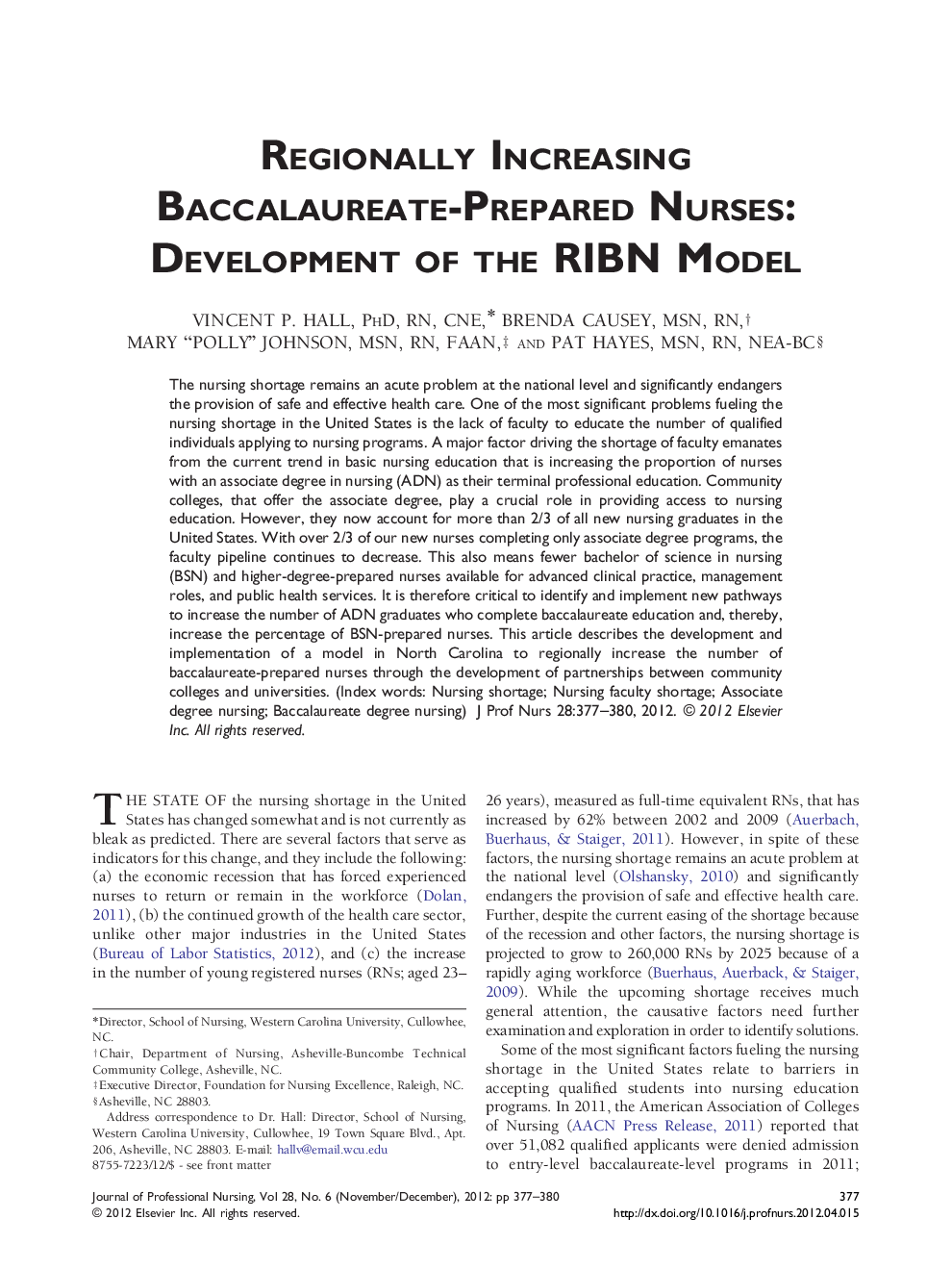| کد مقاله | کد نشریه | سال انتشار | مقاله انگلیسی | نسخه تمام متن |
|---|---|---|---|---|
| 2671188 | 1141342 | 2012 | 4 صفحه PDF | دانلود رایگان |

The nursing shortage remains an acute problem at the national level and significantly endangers the provision of safe and effective health care. One of the most significant problems fueling the nursing shortage in the United States is the lack of faculty to educate the number of qualified individuals applying to nursing programs. A major factor driving the shortage of faculty emanates from the current trend in basic nursing education that is increasing the proportion of nurses with an associate degree in nursing (ADN) as their terminal professional education. Community colleges, that offer the associate degree, play a crucial role in providing access to nursing education. However, they now account for more than 2/3 of all new nursing graduates in the United States. With over 2/3 of our new nurses completing only associate degree programs, the faculty pipeline continues to decrease. This also means fewer bachelor of science in nursing (BSN) and higher-degree-prepared nurses available for advanced clinical practice, management roles, and public health services. It is therefore critical to identify and implement new pathways to increase the number of ADN graduates who complete baccalaureate education and, thereby, increase the percentage of BSN-prepared nurses. This article describes the development and implementation of a model in North Carolina to regionally increase the number of baccalaureate-prepared nurses through the development of partnerships between community colleges and universities.
Journal: Journal of Professional Nursing - Volume 28, Issue 6, November–December 2012, Pages 377–380